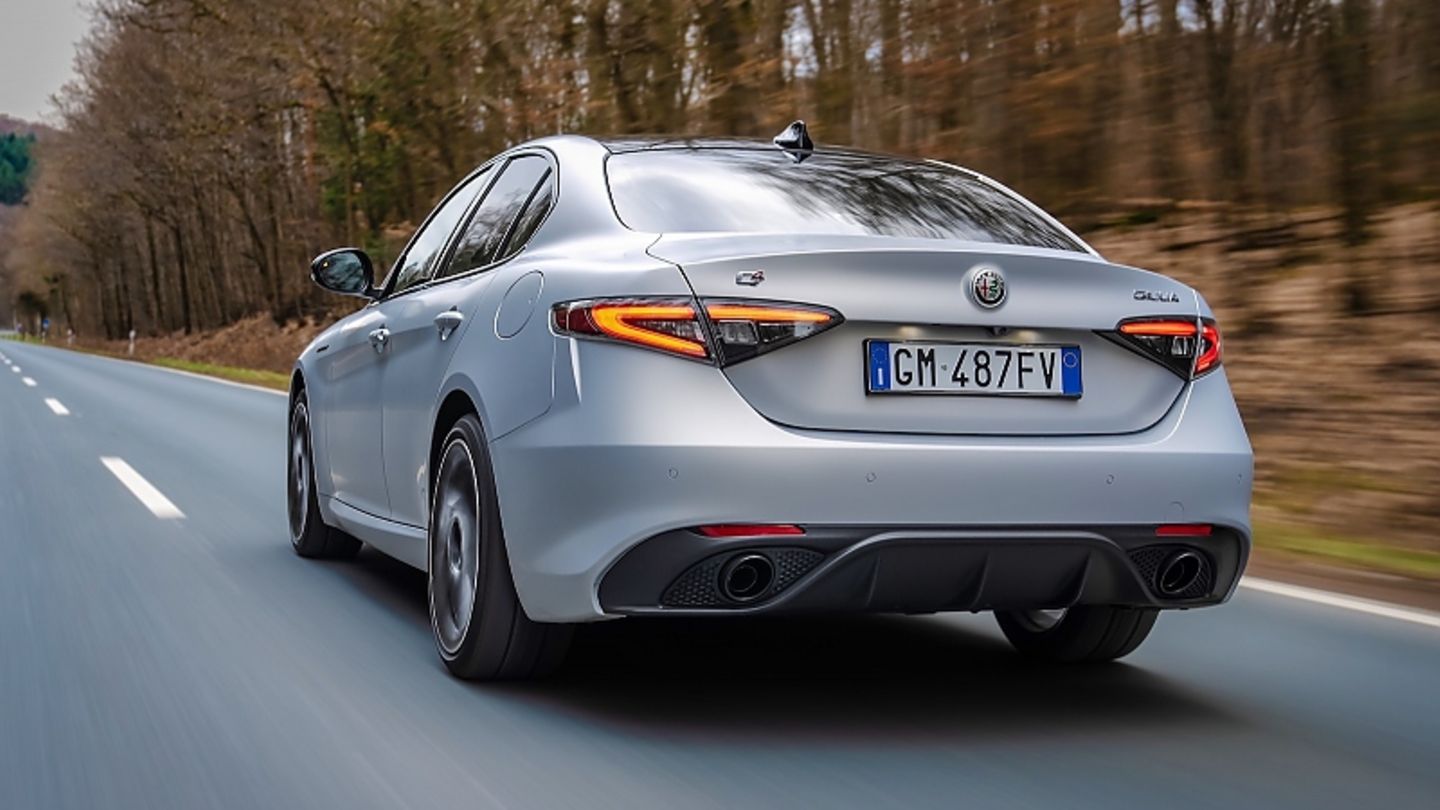Unimaginable years ago, Alfa Romeo has long since become an all-wheel drive brand. One of the most beautiful mid-range sedans is still the Alfa Romeo Giulia and the four-door is even more desirable due to the facelift.
The Giulia is also probably going into its last extensive lap before Alfa Romeo finally switches to the electrical warehouse. Not much has happened with the latest facelift, but the changes are important in order to keep Italian-savvy customers at the helm for a year or two. The new LED headlights of the Giulia were overdue, because the competition had long offered adaptive high-tech spotlights that hide oncoming traffic. And the animated instruments in the cockpit of the Alfa Romeo are just as late as an enlarged central screen for navigation and operation. Now everything is a little more modern, chic and contemporary.
Somewhat surprisingly, the drive portfolio of the four-door has been reduced to a minimum. Apart from the sports version of the 510 hp Giulia QV, the customer has the same engine choice as with the Stelvio: either a 2.2-liter diesel with 154 kW / 210 hp or a two-liter four-cylinder turbo with 206 kW / 280 hp. The two cylinder quartets are obligatory with an eight-speed automatic transmission and variable all-wheel drive. Normally, the power goes almost completely to the rear axle and if there is no adhesion here, at most half of the drive goes to the front axle. The driver doesn’t notice much of all this and is only happy about the problem-free drivability and relaxed dynamics, because the 280 hp are always sporty enough to have fun with the 4.64 meter long family sedan.
From a standing start, it goes extremely unspectacularly in a good 5.2 seconds to 100 km/h and a top speed of 240 km/h also fit. This also applies to the standard consumption, because Alfa promises an average consumption of 8.0 liters per 100 kilometers. If you want to be more economical and visit the gas station less often, we recommend the high-torque common rail diesel with a displacement of 2.2 liters and 210 hp, which leaves something to be desired in terms of top speed and pulling power at high speeds, not only in the competitive environment. The 400 Nm maximum torque at 2,250 rpm, in conjunction with the well-shifting eight-speed automatic transmission, also ensure that the northern Italian can be moved quickly and casually at the same time. Only the sound of the four-cylinder, which is rough and not very melodic under medium or high load, is pressed into the driver’s ears, who is instead happy about the comfortable leather seats, is not convincing. The second row is noticeably narrower and at just 380 liters the cargo space is simply too small for a mid-size sedan. An electric tailgate? none.
The driver decides how sporty and how comfortable the occupants are on the road with the direct competitor BMW 3 Series, Audi A4 or Mercedes C-Class, not least by selecting the right driving program. The normal mode offers the best because the most balanced package, although the steering could still give more feedback from the road. However, this is just as precise as it is smooth-running and the driver quickly feels the comparatively low weight, because despite all-wheel drive and eight-speed automatic transmission, the 4.64 meter long Giulia weighs less than 1.6 tons. That pleases almost as much as the timeless design inside and out. But it can always be arranged with one or the other operating weakness, gaps in the driver assistance systems or the slightly too high seating position.
Source: Stern
I’m a recent graduate of the University of Missouri with a degree in journalism. I started working as a news reporter for 24 Hours World about two years ago, and I’ve been writing articles ever since. My main focus is automotive news, but I’ve also written about politics, lifestyle, and entertainment.



